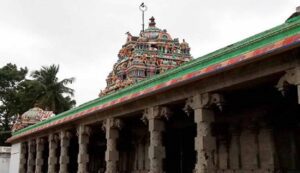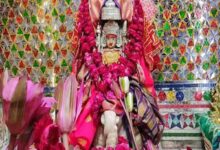Know about the history and mythology of Thirukolakka Sapthapureeswarar Temple
Thirukolakka Sapthapureeswarar Temple: Temples have a unique position in India’s cultural and spiritual legacy, serving as both the focal point of religious belief and a display of art, history, and customs. In Tamil Nadu’s Thanjavur district, Thirukolakka is the name of the Thirukolakka Sapthapureeswarar Temple. This temple, which honors Lord Shiva, is well-known for its mythology and age. Tell us about this temple’s background, spiritual importance, and tale.

Overview of the temple and its site
In Tamil Nadu’s Thanjavur district, close to the banks of the Kaveri River, lies the Thirukolakka Sapthapureeswarar Temple. This temple has a unique position in Tamil Shaivite tradition and is a superb example of Chola-era construction. Among the 275 revered Shiva temples listed in the devotional songs written by Tamil saints is the Padal Petra Sthalam. The temple’s distinctive architecture is reflected in its name, Thirukolakka, which is derived from the Tamil word kolam, which means figure or structure. However, Sapthapureeswarar refers to Lord Shiva as the Saptarishis, or God of the seven sages.
Origin and Mythology
There is a fascinating narrative surrounding the founding of Thirukolakka Sapthapureeswarar Temple. Mythology states that seven sages visited this region in antiquity to do penance. Because of their intense devotion and penance, Lord Shiva granted them the ability to incarnate as a self-manifested Shivalinga here. As a manifestation of Lord Shiva’s favor toward the seven sages, this Shivalinga became revered as Sapthapureeswarar.
Another legend states that a Shiva devotee would often take a bath on the Kaveri River’s banks. One day, while taking a dip in the river, he struck a stone. Upon closer inspection, he saw that it was Shivalinga manifesting herself. The devotee began worshiping that Shivalinga on a daily basis after seeing this miracle as a gift from Lord Shiva. The Chola monarchs constructed a magnificent temple here after it gained popularity among followers over time. The Chola dynasty, which is renowned for its majesty and elaborate sculptures, is the architectural style in which this temple was constructed.
Temple Architecture
One excellent example of Chola-era architecture is the Thirukolakka Sapthapureeswarar Temple. The temple’s main gopuram, or entryway, is made up of many stories with carvings and sculptures of Lord Shiva, Mata Parvati, Ganesha, Kartikeya, and other gods. Stories from Tamil Shaivites and the Shiva Purana are portrayed in these sculptures. The temple’s sanctum sanctorum is where the Sapthapureeswarar Shivalinga is situated. The temple compound also has a holy pond where followers bathe and cleanse before worship. The temple’s walls are a superb example of Chola-era craftsmanship. Among other mythical scenarios, the sculptures include the Shiva-Parvati marriage and dancing Nataraja. Devotees may engage in devotion and meditation in the temple’s expansive courtyard.
Importance of the temple
The Thirukolakka Sapthapureeswarar Temple worships Mother Parvati as Padmini Amman and Lord Shiva as Sapthapureeswarar. Devotees swarm the temple, particularly during Maha Shivaratri, Karthika Purnima, and the month of Saavan. Sincere prayers at this temple are said to grant the devotees’ aspirations and rid their lives of negativity and challenges. In addition, Kalsarpa Dosha Nivarana Puja and other astrological rites are performed in the temple and are well-liked by followers. The Tamil Shaivite tradition has a strong hold on the temple.

